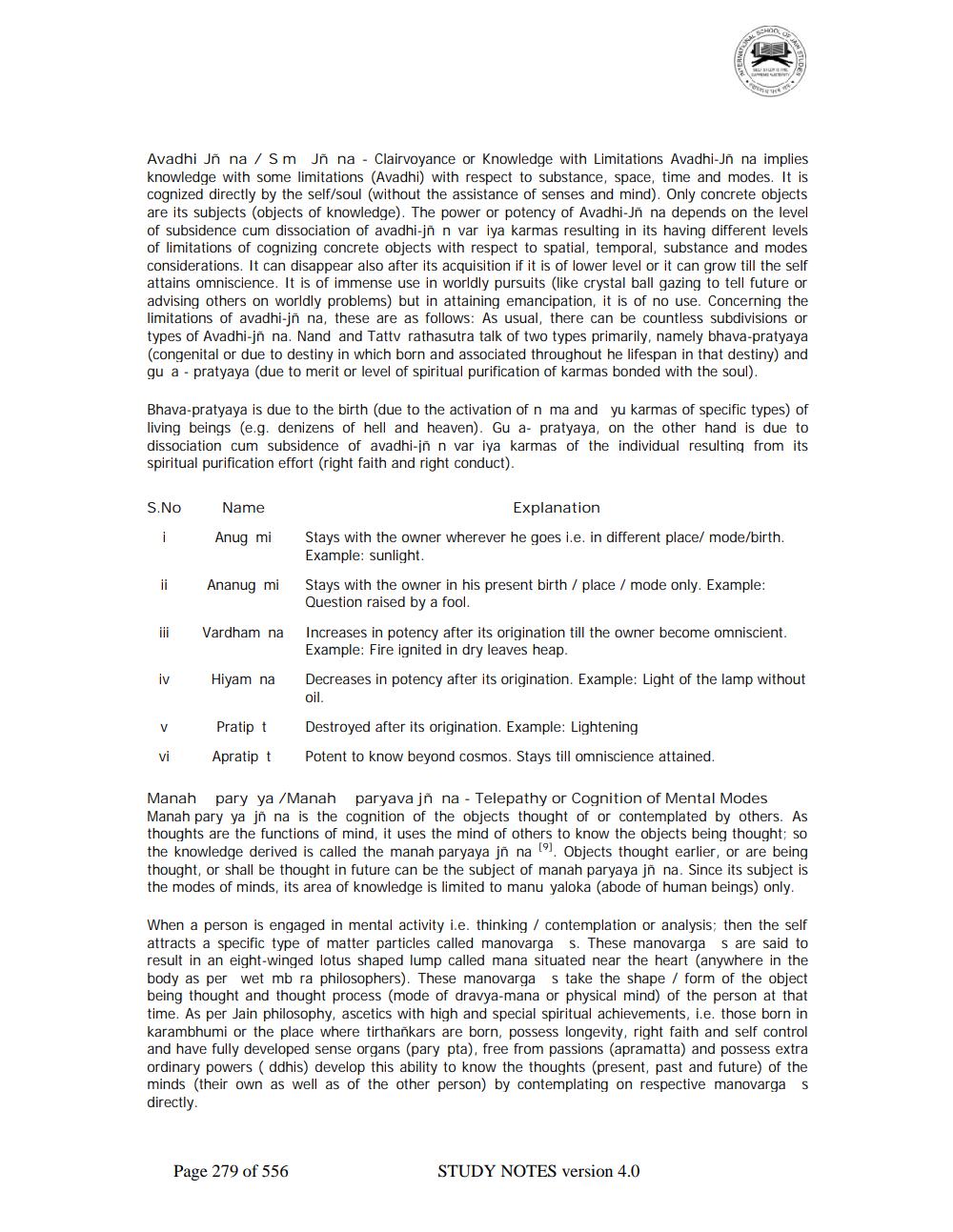________________
Avadhi Jn na / Sm Jn na - Clairvoyance or knowledge with Limitations Avadhi-Jn na implies knowledge with some limitations (Avadhi) with respect to substance, space, time and modes. It is cognized directly by the self/soul (without the assistance of senses and mind). Only concrete objects are its subjects (objects of knowledge). The power or potency of Avadhi-Jň na depends on the level of subsidence cum dissociation of avadhi-jn n var iya karmas resulting in its having different levels of limitations of cognizing concrete objects with respect to spatial, temporal, substance and modes considerations. It can disappear also after its acquisition if it is of lower level or it can grow till the self attains omniscience. It is of immense use in worldly pursuits (like crystal ball gazing to tell future or advising others on worldly problems) but in attaining emancipation, it is of no use. Concerning the limitations of avadhi-jn na, these are as follows: As usual, there can be countless subdivisions or types of Avadhi-jn na. Nand and Tattv rathasutra talk of two types primarily, namely bhava-pratyaya (congenital or due to destiny in which born and associated throughout he lifespan in that destiny) and gu a - pratyaya (due to merit or level of spiritual purification of karmas bonded with the soul).
Bhava-pratyaya is due to the birth (due to the activation of n ma and yu karmas of specific types) of living beings (e.g. denizens of hell and heaven). Gu a- pratyaya, on the other hand is due to dissociation cum subsidence of avadhi-jn n var iya karmas of the individual resulting from its spiritual purification effort (right faith and right conduct).
S.No
Name
Explanation
Anug mi
Stays with the owner wherever he goes i.e. in different place/ mode/birth. Example: sunlight.
Ananug mi
Stays with the owner in his present birth/place/ mode only. Example: Question raised by a fool.
Vardham na
Increases in potency after its origination till the owner become omniscient. Example: Fire ignited in dry leaves heap. Decreases in potency after its origination. Example: Light of the lamp without
Hiyam na
oil.
Pratipt
Destroyed after its origination. Example: Lightening Potent to know beyond cosmos. Stays till omniscience attained.
Apratip t
Manah pary ya/Manah paryava jň na - Telepathy or Cognition of Mental Modes Manah pary ya jň na is the cognition of the objects thought of or contemplated by others. As thoughts are the functions of mind, it uses the mind of others to know the objects being thought so the knowledge derived is called the manah paryaya jň na ). Objects thought earlier, or are being thought, or shall be thought in future can be the subject of manah paryaya in na. Since its subject is the modes of minds, its area of knowledge is limited to manu yaloka (abode of human beings) only.
When a person is engaged in mental activity i.e. thinking / contemplation or analysis; then the self attracts a specific type of matter particles called manovarga S. These manovarga s are said to result in an eight-winged lotus shaped lump called mana situated near the heart (anywhere in the body as per wet mb ra philosophers). These manovarga s take the shape / form of the object being thought and thought process (mode of dravya-mana or physical mind) of the person at that time. As per Jain philosophy, ascetics with high and special spiritual achievements, i.e. those born in karambhumi or the place where tirthankars are born, possess longevity, right faith and self control and have fully developed sense organs (pary pta), free from passions (apramatta) and possess extra ordinary powers (ddhis) develop this ability to know the thoughts (present, past and future) of the minds (their own as well as of the other person) by contemplating on respective manovarga S directly
Page 279 of 556
STUDY NOTES version 4.0




